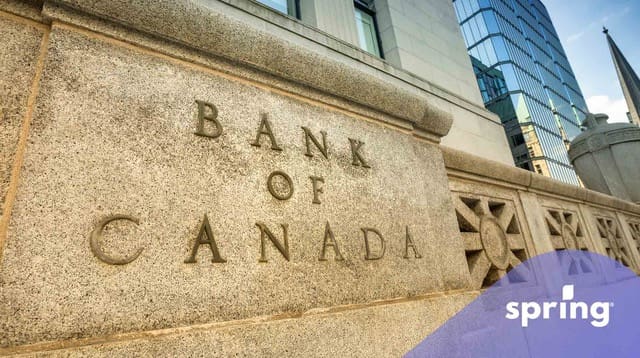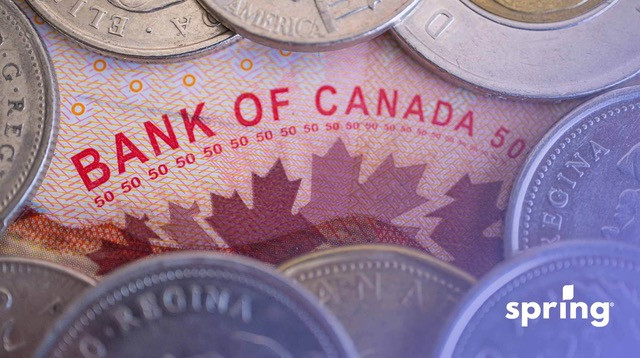Not surprising since this is the largest bank run since 2008.
Essentially how a bank run works is when a substantial amount of people who have their money in a bank, all withdraw it. This puts banks at risk of using up all of their cash reserves. When this happens, more people then worry about the bank becoming insolvent and withdraw their money. The end result of this is the bank not having enough money to cover withdrawals. While this can happen in Canada, let’s take a look at how bank runs in Canada differ from those in the US.
Canadian Banks Compared to US Banks
When it comes to bank runs, the risk for Canadian banks is much lower. That said, it really just depends on the type of bank to determine their overall risk level. In regards to Canada’s big banks, though, they are not only some of the safest banks in Canada, they are some of the safest in the world.
The top 5 banks: Royal Bank of Canada (RBC), Toronto Dominion (TD), Bank of Montreal (BMO), Scotiabank (Bank of Nova Scotia) and Canadian Imperial Bank of Commerce (CIBC), are all banks that are large, well capitalized and diversified. Simply put, they don’t put all of their eggs in one basket.
That said, just because these 5 banks are doing well, that doesn’t mean there isn’t any risk when it comes to the Canadian banking system. Smaller, more independent regional banks can have a larger risk of a bank run due to the fact that they don’t have an established supported structure in banks like the national banks.
Essentially, it’s similar in the US. The Silicon Valley Bank was a smaller bank that took a lot of risks. They took short-term cash deposits from tech clients and purchased longer maturity US mortgage bonds. The larger US banks, specifically the top 4, have a similar structure to the top 5 Canadian banks. The only difference is that the Canadian banks have a larger share of loans for financial stability. This is one of the main factors that makes them safer than American banks, even the larger ones.
The Canadian financial system and the American financial system aren’t really that different. They both have central banks and, instead of being insured by the CDIC the US banks are insured by the Federal Deposit Insurance Corporation. Their central bank is known as the Federal Reserve. Since all of these things are similar, the thing that sets them apart is the fact that there are different regulations.
The Overall Risk of Canadian Banks
While there is still a risk of a bank failure, the overall risk is relatively low. Bank failures are actually very rare in Canada, compared to the US. Canada has had 43 incidents since 1967, whereas the US has had over 500 since 2000. Even during the great depression, over 9,000 banks failed in the US but none did in Canada. There are 2 main reasons for this:
- Strict banking regulations
- The top 5 banks and the fact they are well capitalized
To reduce the risk of Canadians, there are even fail safes in place for a bank run. When you bank with many Canadian banks, your fund amounts up to $100,000 is insured by the CDIC (Canada Deposit Insurance Corporation) which is a Federal Crown Corporation. This means that if something does happen to the banks, the CDIC can pay you out your insured deposits in just a matter of days though. That said, things like stocks, bonds (including government bonds) and mutual funds are considered to be uninsured deposits and there are no premiums paid that will cover them at banks or member institutions.
Even with all that in mind, bank runs aren’t impossible for Canadians. With inflation in the Canadian economy, and really all over the world, the interest rate risk by Canada’s central bank makes things a little less stable even though they’re still well regulated. This can make things much more difficult for the smaller niche bank’s ability to avoid a bank run, just like what happened in the US. And since not every bank is insured, they might not be covered which can add some more pressure.

The Safety of Credit Unions in Canada
While credit unions are still a financial institution, they are still different from the banks. They are not insured by the CDIC like the banks are, but they are insured by the provinces and follow the rules indicated by the Credit Unions Act. The main difference between a credit union and a bank is that credit unions are not for profit whereas banks are financial institutions that are for profit.
Really, banking with a Canadian Credit Union is very similar to banking with a traditional Canadian bank, As mentioned, if an insured Canadian bank fails then eligible deposits are insured by the CDIC. With credit unions eligible deposits are also insured, but by a different insurer. The minimum insured amount on eligible accounts is usually $100,000. Some credit unions will insure higher than that as well.
The Security of Canadian Banks
Canadian banks are very secure, especially with the protection of the CDIC. It’s important to know that the CDIC doesn’t just insure $100,000 per client, it’s per account. The types of accounts they insure are:
- Savings accounts
- Chequing accounts
- GIC’s
- Term deposits
- Money orders
- Certified cheques
- Bank drafts
The Canadian financial system is also regulated by the Office of the Superintendent of the Financial Institutions. It was established in 1987 and is independent of the Government of Canada. Essentially they supervise and regulate federally registered:
- Banks
- Insurers
- Trust and loan companies
- Private pension plans (those subject to federal oversight)
They also closely work with the CDIC, Government of Canada, Bank of Canada and the Financial Consumer Agency of Canada.
Current Banks and the Risk of Failing
At this point no, Canadian banks are not at risk of failing or going into a banking crisis. We have already discussed the reasons why banking in Canada is more secure but, it’s notable to point out that the banking system in Canada is more concentrated. Compared to 7,000 US financial institutions, Canada only has 28. Strangely enough they are also more diverse making Canadian deposits more secure.
Bank Runs in the US
While the most talked about recent bank run was the Silicon Valley collapse, it wasn’t the only one. Other banks that have recently failed in the US are Signature Bank which collapsed in March of 2023 and the second largest bank failure since 2008, as well as First Republic Bank in May of 2023. And these are just the US banks. It doesn’t include the global financial system.
It’s no surprise that this could cause some panic in the banking industry and lead to a global financial crisis. That’s why global central banks are looking to get ahead of the problem in order to verify it doesn’t affect anyone’s bank deposits.
Overview
No matter who you bank with or where you bank, there is always going to be some level of risk. US banks, Canadian banks as well as other financial institutions around the world aren’t going to be immune to economic changes. That said, it’s important to be careful when choosing your bank. You may not be immune to risk but going through the bank’s policies and procedures in the case of a bank run is a good place to start.
Being that there are only 28 financial institutions to choose from, you definitely don’t have as many options as the US. This means though, that there is less risk. The more choices there are in regards to banks, the higher the risk of failing. That paired with the fact that the top 5 banks in Canada are some of the most stable banks in the world is also reassuring.








